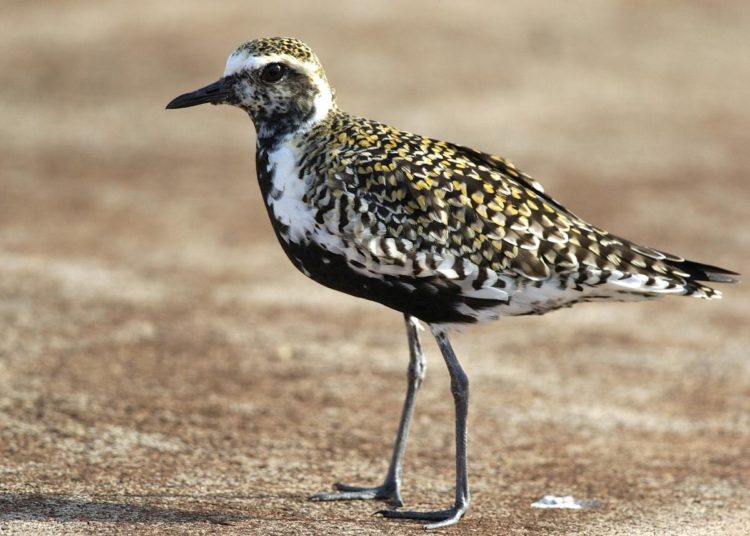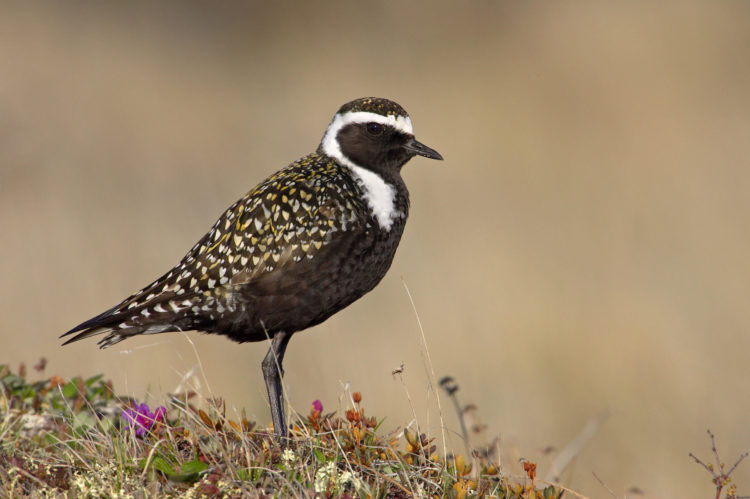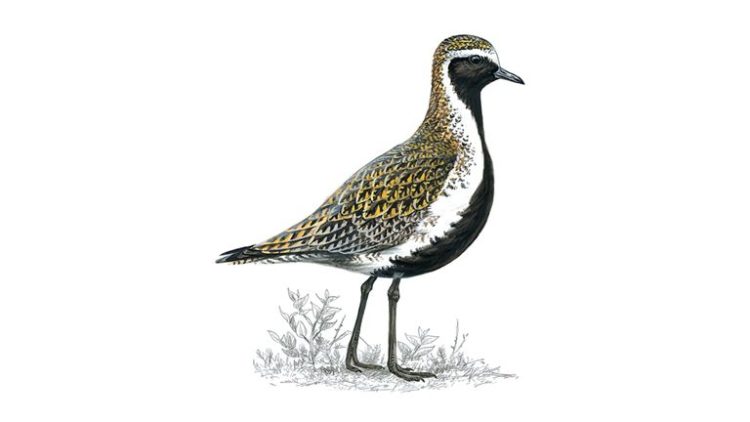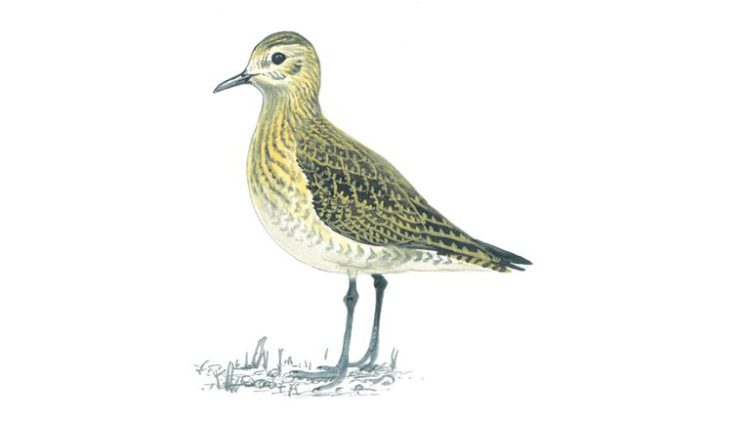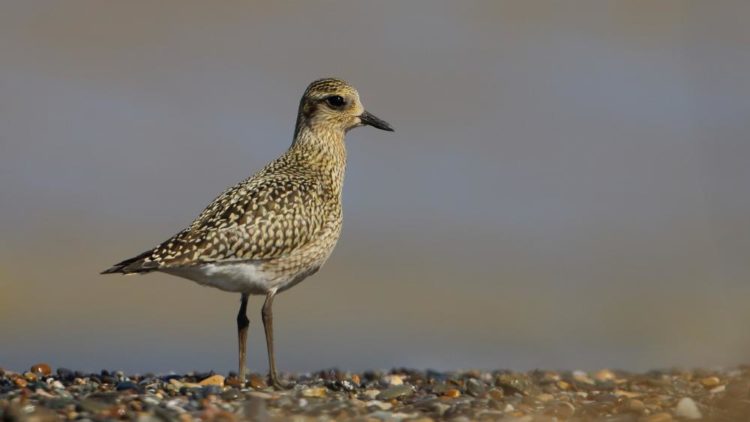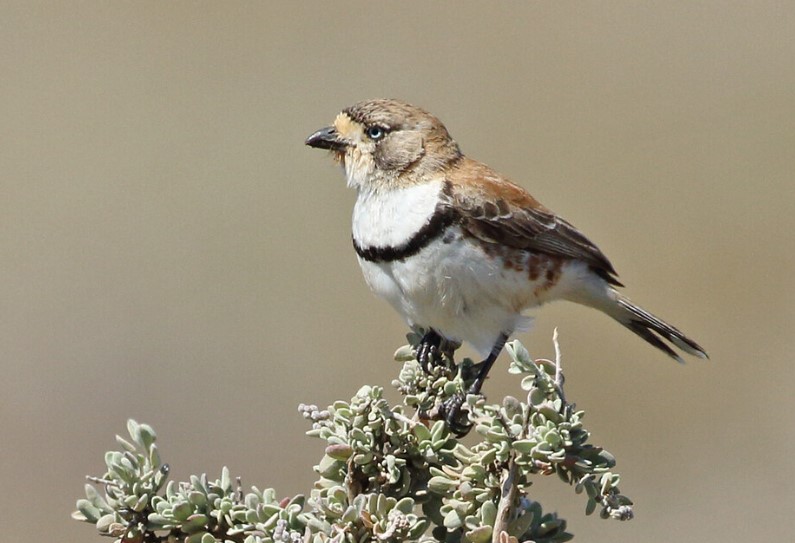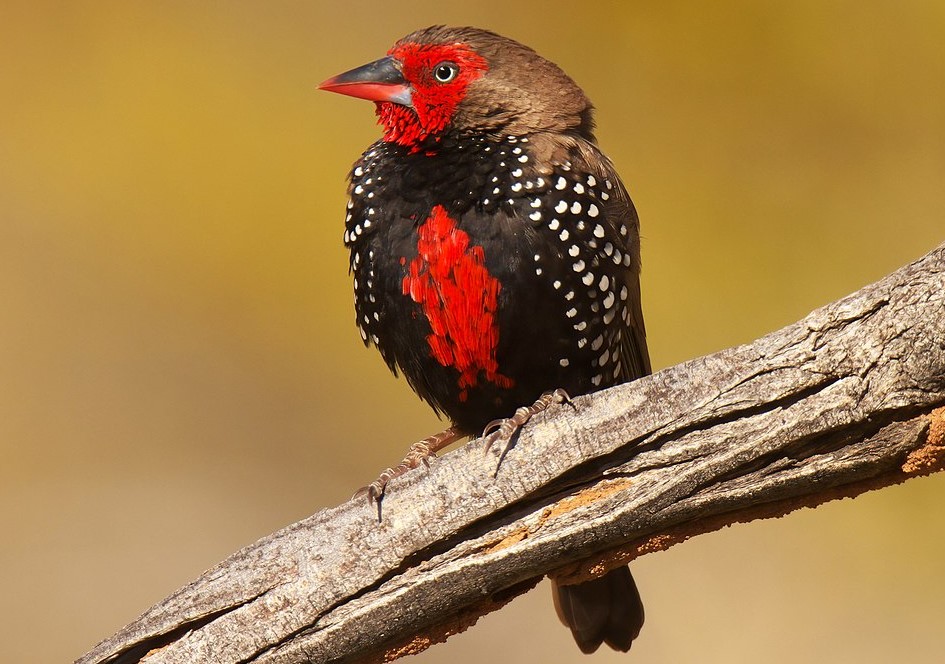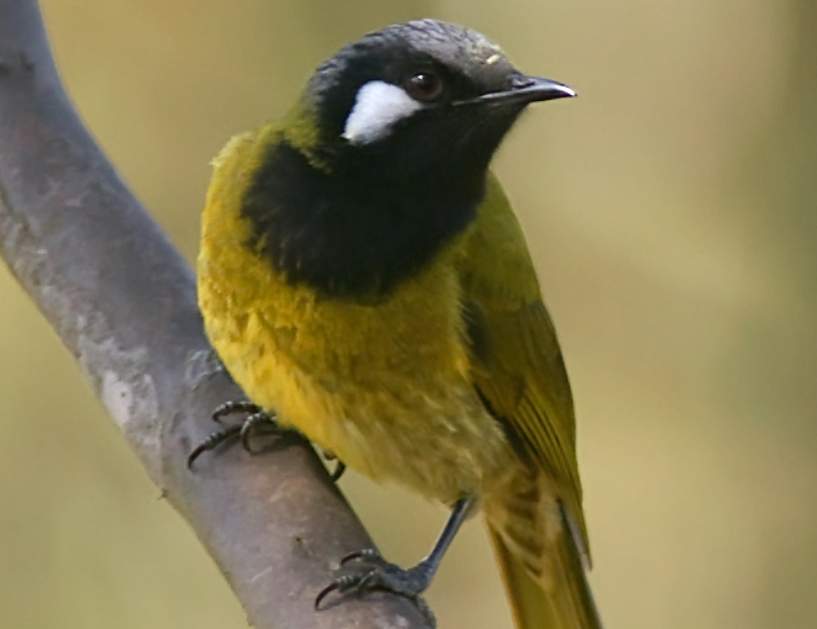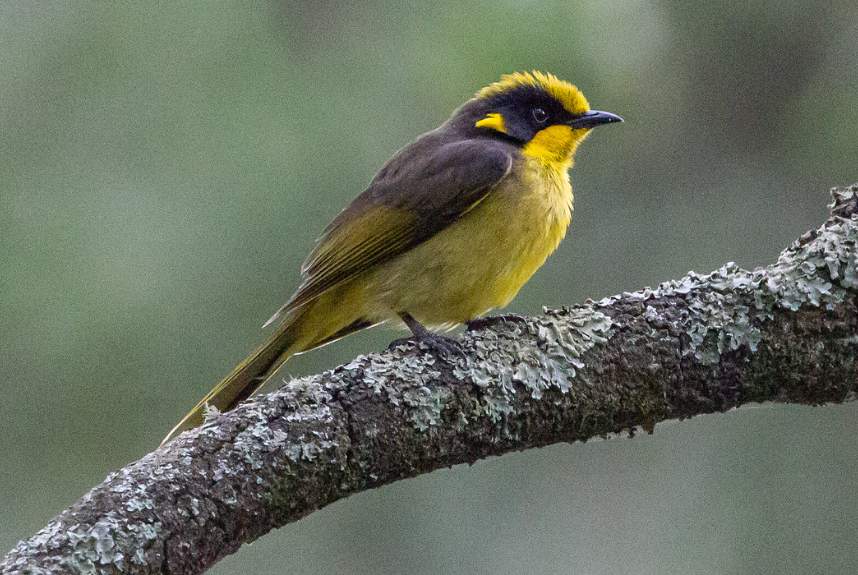The Pacific golden plover (Pluvialis fulva) is a medium-sized plover, and it is believed that golden plovers flocked when rain was imminent. The Pacific golden plover is a 23 to 26-cm long breeding adult that is spotted gold and black on the crown, and back on the wings. The bird’s face and neck are black with a white border. It has a black breast and a dark rump and The legs are black.
In winter, the black is lost, and the plover then has a yellowish face and breast, and white underparts. It is alike two other golden plovers, “The Eurasian” and “American plovers”. The Pacific golden plover is smaller, slimmer, and relatively longer-legged than the European golden plover, and also has white axillary feathers.
Generally, the Pacific plover is found to be more comparable to the American golden plover, with which it was once considered nonspecific as a “lesser golden plover”. The Pacific plover is slimmer than the American species. This Plover has a shorter primary projection, and longer legs, and is habitually found to have more yellow on the back.
This wader forages for food on tundra, fields, beaches, and tidal flats, frequently by sight. The birds like to eat insects and crustaceans and some berries. The breeding habitat of the Pacific golden plover is the Arctic tundra from northernmost Asia into western Alaska. It nests on the ground in a dry open area. It is migratory and winters in South Asia and Australasia.
A few winters in California and Hawaii, USA. In Hawaii, the bird is recognized as the kōlea. It is a very rare vagrant in Western Europe. They return to the same wintering territory each year. Which allowed scientists in Hawaii to attach tiny light-level Geo-location devices to the birds and then retrieve them the following year in the same location. Moreover, a study revealed that these birds make the 4800 km non-stop flight between Alaska and Hawaii in 3 to 4 days.
In winter, they form large flocks which fly in fairly tight formation with fast, twinkling wing beats. A plover is a large shorebird of pastures, open ground, and mudflats. It makes one of the longest migratory journeys of any shorebird. It breeds on the high Arctic tundra of Alaska and Canada and winters in the grasslands of central and southern South America.
The American Plover “Pluvialis dominica” has a long, circular migration route. In the fall it flies offshore from the East Coast of North America nonstop to South America. On the return in the spring, it passes primarily through the middle of North America to reach its Arctic breeding grounds. The adult American Golden Plovers leave their Arctic breeding grounds in early summer, but juveniles usually linger until late summer or fall.
Some adults arrive at the wintering grounds in southern South America before the last juveniles have left the Arctic. The oldest American Plover was at least 13 years old when it was recaptured and re-released during a banding operation in Alaska. The bird feeds in short vegetation or open areas and moves by stop-run-stop, scanning and capturing prey at stops. Captures prey by a single peck or series of pecks.
Also Read: The Melodious Song Bird European Goldfinch (Carduelis carduelis)
Source: All About Birds! RSPB! Wikipedia
